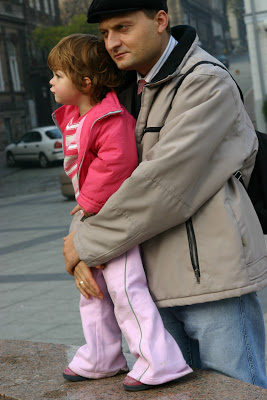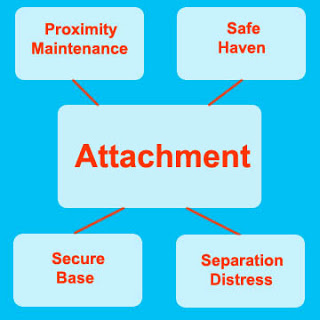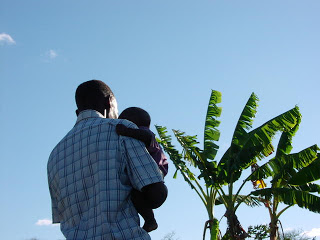 |
| Copyright Renata Osinska, Dreamstime.com |
How I coach parents to nurture courage in their kids has a lot to do with attachment—which I understand to be the first step in nurturing courage development. Attachment being defined as psychological connectedness between human beings. A healthy attachment between parent and child provides for a child’s basic needs like food, water, shelter—our child’s survival being our most basic responsibility. The infant’s sole purpose is to survive with the help of a secure attachment with someone (ideally a parent) able to provide the kind of security, safety, and strength needed for protection. The secure someone (ideally an adult who is stronger and wiser) also has a complementary attachment behavior system (or internal working model of attachment) that activates in response to the infant/child and seeks to protect, particularly when a threat is present.
A healthy parent/caregiver-child attachment teaches a child the basics of human relationship and love, the willingness to try new things and develop intellectually, take risks, open their hearts and trust themselves and others, to develop a moral code, and ultimately to have courage in life. Researchers Popper & Amit (2009) have also found that secure attachment, along with low trait anxiety and openness to experience, is correlated with leadership development. Without secure attachment between a parent/caregiver and child in infancy and early childhood, a child is at risk for severe psychological, cognitive, social, and physiological consequences.
CAUTION: if you are a reader like me, a bit of a perfectionist and somewhat anxious about doing this whole parenting thing right…DON’T WORRY! Being a secure attachment for your child just means loving them, connecting with them through satisfying their primary senses (touch, taste, smell, sight, hearing), being reliable (at least most of the time), and not leaving them in a crib for the first six months of their lives to fend for themselves! Attachment theory and parenting tends to freak people like me out, but I just remember that there is no question I love my kids, am doing my best, and that there’s lots of room for making mistakes, recovering, and moving on together in the direction of love. Our children truly deserve our best, so they can become their best. Research shows we are doing a good job: the vast majority of infants and toddlers have secure attachments with their parents, and half of those without a secure attachment relationship at home have a secure attachment with an early childhood teacher/daycare provider.
- Attachment is an Innate Motivating Force (seeking and maintaining close contact with other human beings across our lifespan is an innate drive, primarily to ensure survival).
- Secure Dependence Compliments Autonomy (as human beings, we are neither overdependent nor completely independent. The more securely attached we are the more confident and autonomous we become).
- Attachment offers a Safe Haven (the presence of loved ones offers comfort and security in our lives, especially in response to a threat–i.e. hunger, loud noises, unfamiliar environment).
- Attachment offers a Secure Base (secure attachments provide the base from which we may explore our surroundings and be cognitively open and reflective).
- Accessibility and Responsiveness Builds Bonds (as a parent this means being both emotionally and physically present and responsive. Emotional regulation is also an important concept associated with responsiveness).
- Fear and Uncertainty Activate Attachment Needs (the comfort and connection of an attachment figure is especially important when fear and/or threat are present).
- The Process of Separation Distress is Predictable (angry protest, clinging, depression and despair result when attachment behaviors fail to evoke comfort and contact with attachment figures).
- A Finite Number of Insecure Forms of Engagement Can be Identified (typically three types of pursuer-distancer behaviors result when attachment behaviors fail to produce the necessary comfort and connection sought: anxious preoccupied clinging, detached avoidance, and seeking closeness combined with fearful avoidance. The primary question we are asking of our attachment figure here is “Can I depend on you when I need you?”).
- Attachment Provides Working Models of Self and Other (attachment strategies generally deal with how to process and cope with emotion. Secure attachment helps us learn self-love and love of another. It is associated with self-efficacy and a trust in other’s dependability. Once secure attachment is established, an individual develops cognitive schemas associated with goal-setting, life-affirming beliefs, and an emotional regulatory system that is more responsive than reactive.)
- Isolation and Loss are inherently Traumatizing (stress-based habits and behavioral strategies result in response to the unmet needs and fear that trauma evokes. Bowlby’s (1969) fundamental research started with case studies of the effects of maternal deprivation and separation on child development. Bowlby (1988) himself, at age four, suffered the early loss of his beloved nanny; and had limited contact with his mother due to a traditional upper class British upbringing involving boarding school for most of his childhood).
I’ll start with Sears’ seven “Baby Basics” to getting attached in my next posts.
Sources:
Goosens, F. & van IJzendoorn. (1990). Quality of infants’ attachments to professional caregivers: Relation to infant-parent attachment and day-care characteristics. Child Development, 61, 832-837.
Popper, M. & Amit, K. (2009). Attachment and leader’s development via experiences. The Leadership Quarterly, 20, 749-763.


